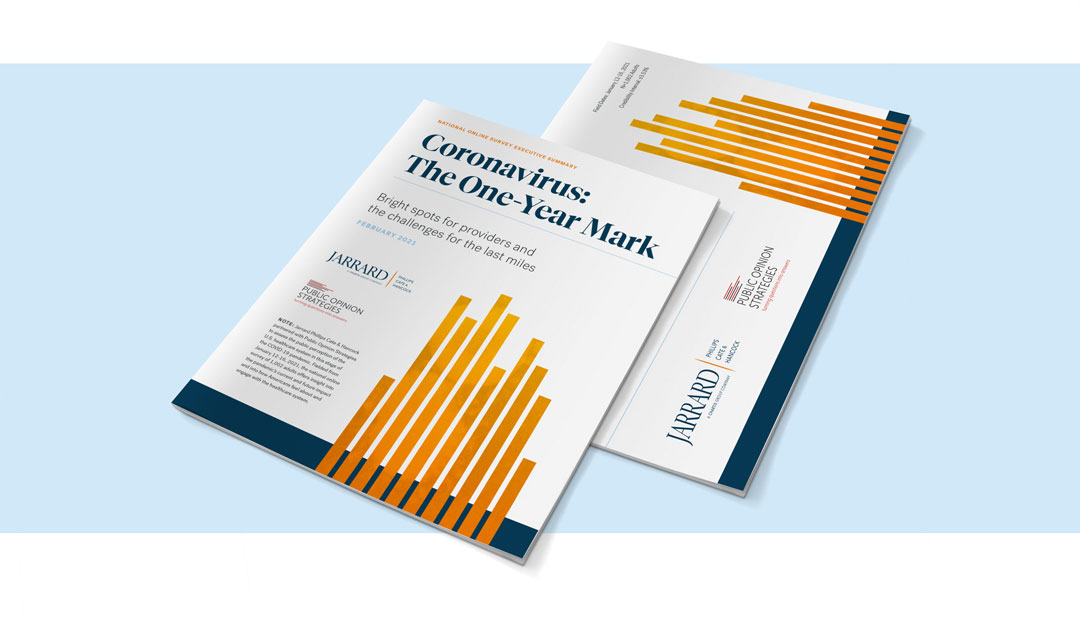
When the CDC and FDA announced the recommended pause in use of the Johnson & Johnson COVID-19 vaccine, healthcare marcom teams were forced into overdrive, along with their operational and clinical colleagues. The announcement has had instant ramifications for patients and healthcare providers alike. It is causing fear among the 6.8 million people who have already received the J&J vaccine. It is confounding distribution of the J&J vaccine. It is perpetuating and reinforcing vaccine hesitancy. And, it is adding one more burden on an already-fatigued healthcare workforce.
Even as this story continues to develop and the list of things we don’t know runs long, we do know that your staff and patients have questions. And that doctors, nurses and provider organizations are the ones to answer them because they are the most trusted voices when it comes to speaking on healthcare issues. It’s wise to activate them in this moment.
As you communicate with your community and your employees, keep these seven actions in mind.
-
Be proactive, even aggressive. Pausing J&J vaccination administration comes at a pivotal moment in pandemic response. While this news is damaging, we should focus on the merits of other available vaccines to stave off an overall increase in hesitancy. As you craft your communications, lean into the rigorous safety precautions and robust real-world data cited by the CDC and FDA to instill confidence in the Pfizer and Moderna options. Don’t take on the responsibility of vouching for J&J’s safety. Do share, without minimizing the significance of the blood-clotting cases, that it was six cases out of 121 million Americans receiving any COVID-19 vaccine. That illustrates the extraordinary focus federal agencies are placing on safety. The adverse effects are frightening, yet, as one person we spoke with said, their discovery in the context of the J&J vaccine “is a testament to how effective our vaccine monitoring system is.”
- Prepare your people. Your physicians and nurses will be peppered with questions about the J&J vaccine – from patients who’ve gotten one, to those who were signed up to receive one, to others who are reluctant to get vaccinated at all. Develop your talking points and FAQs to distribute across your organization, along with processes to ensure your entire system is providing a consistent message.
- Centralize the inbound inquiries. Part of preparing your people is to avoid unnecessarily burdening them. Yes, educate your clinicians to answer questions. But also build out scalable systems to distribute information and respond to questions. Consider a call center to address frequently asked questions and handle scheduling changes. Post FAQs and your policies on your website and other digital channels.
- Activate your government relations team. Reach out now to your state officials for the latest on their recommendations, requirements, next steps and timing. We’ve seen a patchwork of state requirements at every stage of the pandemic, and there’s no reason to believe this will be any different. Keep the lines of communication open with officials so that you can respond to whatever they say and do next.
- Don’t get out ahead of government agencies. This isn’t the time to take an action before the CDC or your governor’s office mandates something else. You’ll be fielding enough questions as it is. Don’t put yourself in the position of having to explain why your decisions diverged from later guidelines. In addition, be mindful to balance communicating effectively on this issue while still upholding the CDC and FDA as owners and arbiters of vaccine safety.
- Tune into your channels. This is a hot issue. People are talking. Keep a close eye on your social media accounts. Make sure your marcom and patient relations teams are listening across all your channels to flag questions or concerns and, as necessary, escalate them.
- Be prepared to communicate about this. A lot. It’s not going away and, despite our best efforts, will likely affect the overall perception of the COVID-19 vaccine campaign. Questions and concerns will continue. Listen for clues that certain subpopulations (in this case, particularly women of childbearing age) may need tailored communications if they are ever found to be at greater risk for side effects.
Need Help Navigating Vaccine Communications?




















